Arugula plants are one of the vegetables rich in nutrients for human health. This vegetable contains many vitamins, which help prevent cardiovascular diseases and decline in human health. Arugula plants are often used as an indispensable spice in salads and sandwiches.
Many gardeners may confuse this vegetable with some weeds because they have a very similar appearance. Some similar characteristics of Arugula plants with weeds are soft, dark green leaves with veins on the leaf surface. In this article, let’s learn and distinguish between weeds that look like Arugula.
Top 11 Types Of Plants That Look Like Arugula
There are 11 types of plants in the same and different families that all have the same appearance as the Arugula plant. Popular plants include Wild Rocket, Dandelion, Cat’s Ear, Ragwort, Shepherd’s Purse, Hairy Bittercress, Wild Mustard, Common Sorrel, Creeping Thistle, Wild Radish and Swine Wartcress.
Wild Rocket (Diplotaxis Tenuifolia)
Wild Rocket is the vegetable most similar in appearance to Arugula plants. Many people easily confuse Wild Rocket with Arugula plants because they both have soft, alternate leaves and veins on the leaves. However, if you look closely at Wild Rocket, you will notice that the leaves of this plant are smaller and more serrated than those of Arugula plants.

Another fundamental difference between these two plants is their ability to withstand cold and different temperatures. Wild Rocket is a perennial plant while Arugula is an annual plant, so Wild Rocket is better able to withstand cold and high temperatures than Arugula plants.
In addition, another basic difference between Wild Rocket and Arugula plants is the color of the flowers. Although the flowers of these two plants are cross-shaped, Wild Rocket’s flowers are bright yellow and Arugula plant’s flowers are white. If you accidentally make a mistake while picking them in the garden, don’t worry too much because Wild Rocket is non-toxic and can be combined in some dishes.
Dandelion (Taraxacum)
Another vegetable that many people often confuse with Arugula plants is dandelion. These two types of plants both have dark green lobed and serrated leaves. However, you need to carefully observe the shape and serrations on the leaves of these two plants to distinguish them.
The leaves of Arugula plants have alternate leaf lobes and are slimmer and longer than those of dandelions. Meanwhile, dandelion leaves do not have clear leaf lobes and are lanceolate and irregularly serrated. Additionally, a basic difference you can spot is the flower position of these two plants. While the flowers of Arugula plants tend to grow taller once the plant has reached a height of 12-30 inches (30-76 cm), the flowers of dandelions grow close to the ground and have no space between the leaves and branches.

You will easily distinguish these two types of plants through the color of the flowers. Arugula’s flowers will be white or pale yellow. Meanwhile, dandelion flowers are bright yellow and then they will turn into cottony white flowers with a spherical shape. You can consume these two vegetables because they both have different nutritional values. However, dandelions will taste more bitter than Arugula plants.
Cat’s Ear (Hypochaeris Radicata)
This type of plant looks like a dandelion, so many people may still confuse them with Arugula plants. Cat’s Ear plants also have alternate, darkly colored leaves that grow close to the ground. The shape of this plant resembles an underground rose. The stem of this plant can reach up to 20 inches (50 cm) in height. However, the biggest difference in leaves between Arugula plants and Cat’s Ear is that Cat’s Ear leaves are hairy. These two plants are both edible, but Cat’s Ear plants have a bitter taste and are not as popular as Arugula plants.
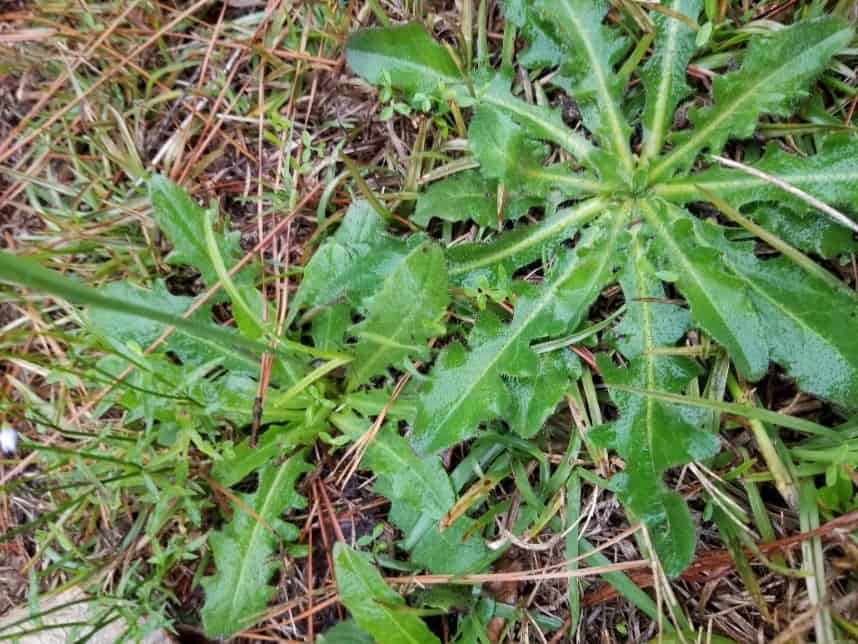
Ragwort (Senecio Carniolica)
Ragwort plants are also a type of plant that looks quite similar to Arugula plants. The leaves of both plants are lobed and alternate. However, they still have basic differences such as Ragwort’s leaf lobes tend to be more deeply divided. Besides, flower color is the biggest differentiating feature of these two types of plants. The flowers of Ragwort plants are yellow like daisies while the flowers of Arugula plants are white. However, you need to observe carefully and avoid picking this plant in the garden because it is a poisonous perennial. If you eat this plant, you can get poisoned and cause liver damage.
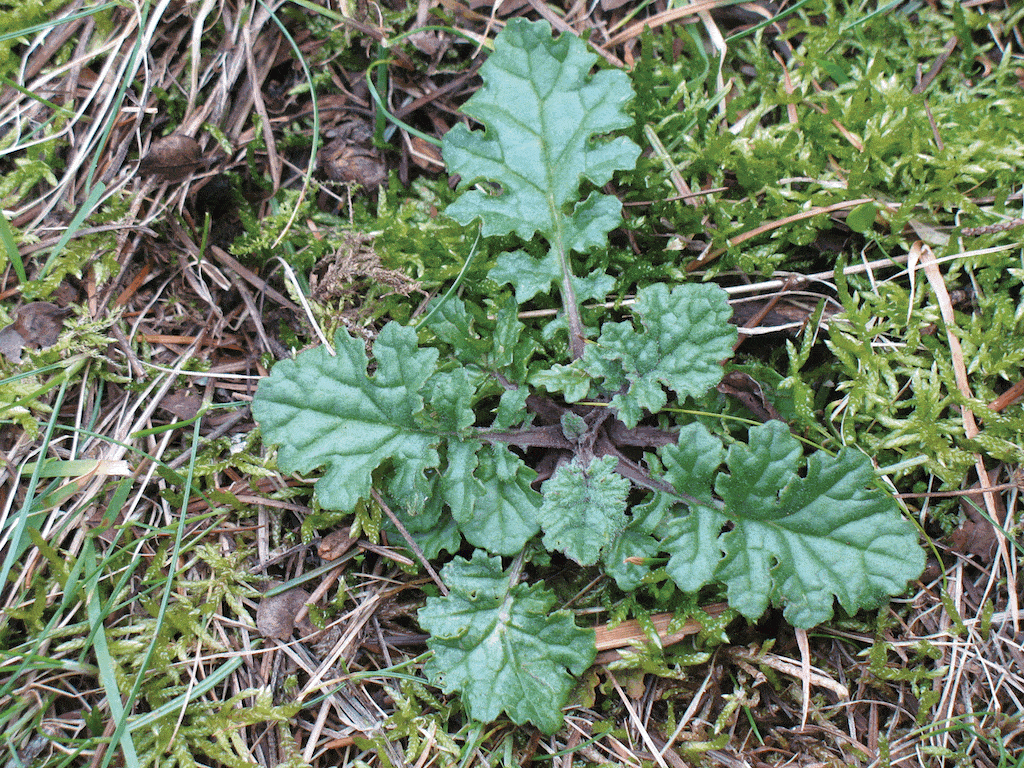
Shepherd’s Purse (Capsella Bursa-Pastoris)
Shepherd’s Purse and Arugula plants have a very similar appearance. They are all similar in size, have serrated leaves, and symmetrical leaf lobes, and are arranged in a rosette. However, you can completely distinguish this plant from Arugula plants because their flowers are white and much smaller than those of Arugula plants. Shepherd’s Purse flower size is less than 1/8 inch (3 mm) across. Shepherd’s Purse is also an edible plant and can be used as an herb.

Hairy Bittercress (Cardamine Hirsuta)
Many people often confuse Hairy Bittercress with Arugula plants because they both form a rosette of leaves about 8 inches (20 cm) wide and 12 inches (30 cm) tall. In addition, these two plants both belong to the Brassicaceae family, so their flowers are small, white, and cross-shaped. The flavors of these two plants are quite similar, they are both spicy and strong like pepper.
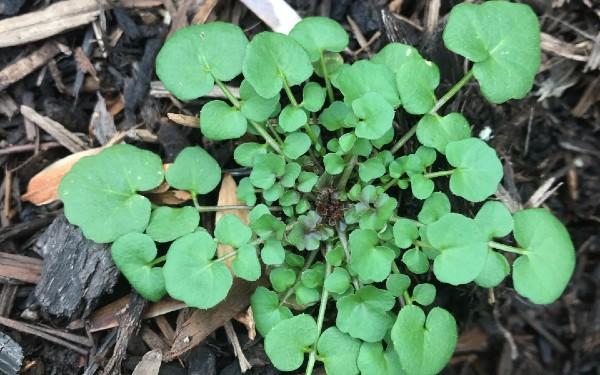
Wild Mustard (Sinapis Arvensis)
Wild Mustard looks very similar to Arugula plants when they are young. This plant also has small, dark green leaves and leaf lobes like Arugula plants. However, the leaves of Wild Mustard are covered with small hairs. You may confuse these two plants when they are young because the layers of leaves intertwine like rosettes.

However, the obvious difference between these two types of plants is in the height. Wild Mustard can grow up to 16-79 inches (40-200 cm) tall, while Arugula plants typically only grow to about 12-30 inches (30-76 cm) tall. In addition, Wild Mustard’s flowers are yellow and small in size, while Arugula’s flowers are usually white. This plant is edible and is often used as a vegetable in salads.
Common Sorrel (Rumex Acetosa)
Common Sorrel and Arugula plants are both annual plants, so their growth processes are relatively similar. These two types of plants both have leaves arranged in a rosette from the ground and the leaves radiate around. You can easily confuse these two plants when they are young. However, as they mature, you will notice some major differences. The leaves of Arugula plants will have lobes while the leaves of Common Sorrel will not have alternate lobes. Additionally, the leaves of Common Sorrel are not serrated like the leaves of Arugula plants.

In particular, you can also distinguish these two types of plants when they have bloomed. Common Sorrel’s flowers are small in size, changing from green to reddish brown. Meanwhile, the flowers of Arugula plants are white and larger in size. The flavor of Common Sorrel is also different from Arugula plants. Common Sorrel has a fragrant lemon flavor, unlike the spicy and strong taste of Arugula plants.
Creeping Thistle (Cirsium Arvense)
Creeping Thistle belongs to the Asteraceae family, while the Arugula plant belongs to the Brassicaceae family. However, their leaves have similar shapes such as serrated teeth, alternate leaf lobes, and pointed leaves. Creeping Thistle is a plant that can reach a height of 1 to 4 feet (30.5 to 122 cm). The biggest difference between these two plants is the color of the flowers. The flowers of Creeping Thistle are pink and purple while the flowers of Arugula plants are white. You can enjoy many delicious dishes from this plant but you need to remove its thorns first.
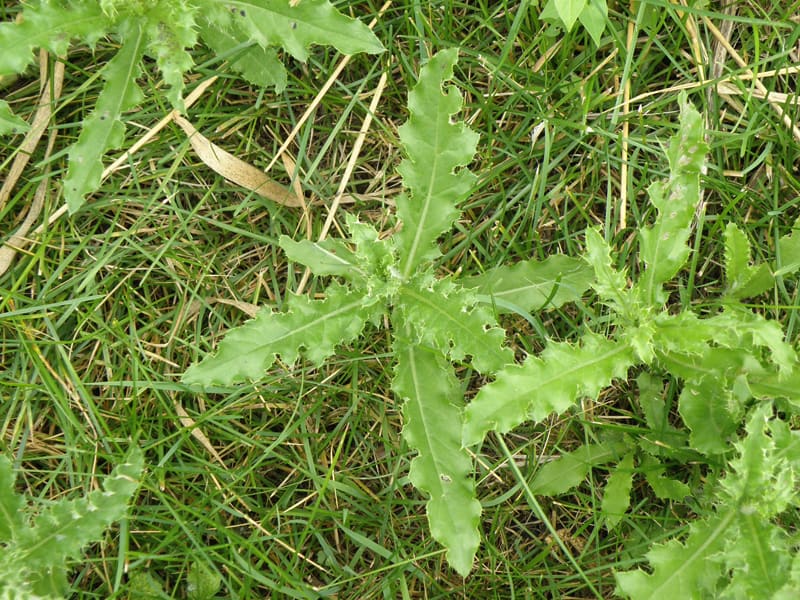
Wild Radish (Raphanus Raphanistrum)
Wild Radish and Arugula plants are both members of the Brassicaceae family, so they both have small, cross-shaped flowers. However, if you look closely at the leaves, you can spot major differences between these two types of plants. Wild Radish’s leaves are generally broader, less hairy, and have deeper lobes than Arugula plants. Additionally, Wild Radish flowers can be yellow, white, or purple while Arugula plant flowers are only white.
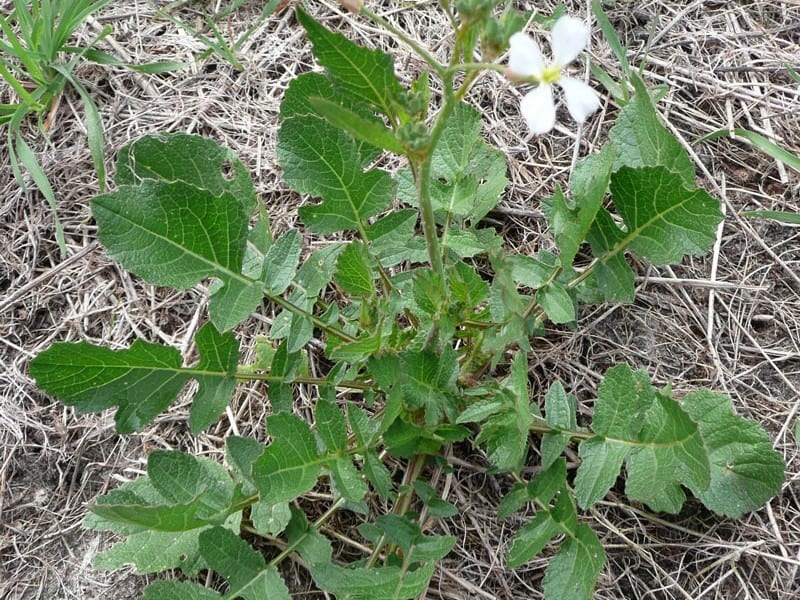
Swine Wartcress (Coronopus Didymus)
Swine Wartcress and Arugula plants belong to the Brassicaceae family, so they are similar in leaf structure and rosette leaf arrangement. However, the leaves of Swine Wartcress are divided into many small lobes and have a more complex shape than those of Arugula plants. Swine Wartcress is also small in size and only reaches 4 to 12 inches (10 to 30 cm) in height.
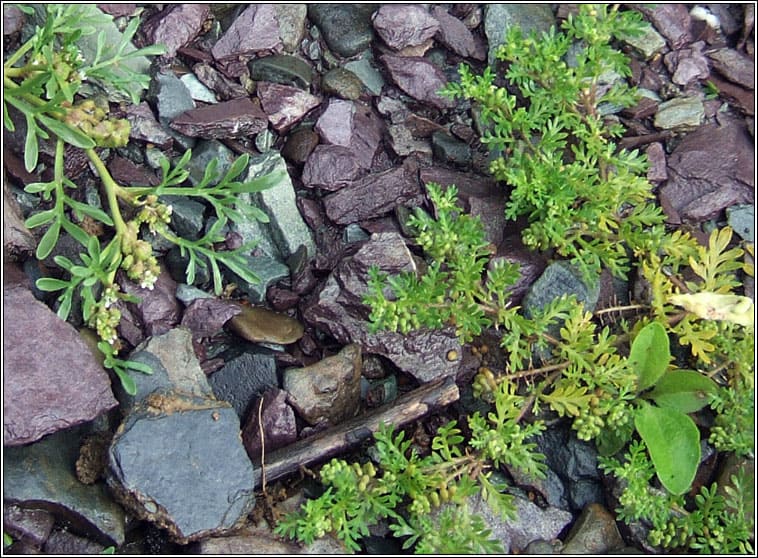
Swine Wartcress’s flowers grow in clusters and come in many different colors such as white and light purple. Meanwhile, the flowers of Arugula plants grow singly and are white. In particular, the flavor of Swine Wartcress is quite pungent and bitter, however, they are still used in many delicious salads.
Summary
Plants such as Wild Rocket, Dandelion, Cat’s Ear, Ragwort, Shepherd’s Purse, Hairy Bittercress, Wild Mustard, Common Sorrel, Creeping Thistle, Wild Radish and Swine Wartcress most closely resemble Arugula plants when they are young. Their common structure is small, dark green leaves arranged in a rosette shape.
However, you need to observe carefully and avoid confusion because some weeds are poisonous and damage the functions of the human body. Some plants can be eaten but need to have thorns or hairs removed from the leaf surface. Astringent or bitter flavors will also affect the dish if you mistakenly pick these plants with Arugula plants.